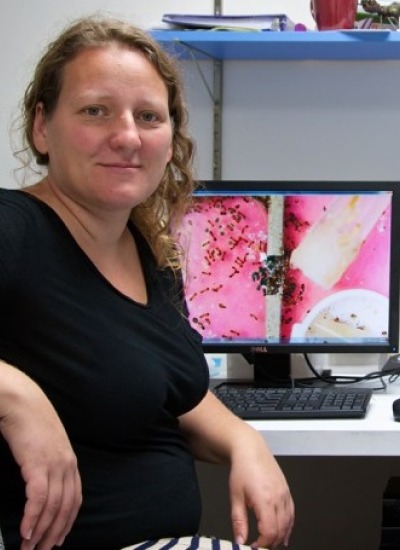Anna R Dornhaus
Publications
PMID: 19324679;PMCID: PMC2827444;Abstract:
The problem of how to compromise between speed and accuracy in decision-making faces organisms at many levels of biological complexity. Striking parallels are evident between decision-making in primate brains and collective decision-making in social insect colonies: in both systems, separate populations accumulate evidence for alternative choices; when one population reaches a threshold, a decision is made for the corresponding alternative, and this threshold may be varied to compromise between the speed and the accuracy of decision-making. In primate decision-making, simple models of these processes have been shown, under certain parametrizations, to implement the statistically optimal procedure that minimizes decision time for any given error rate. In this paper, we adapt these same analysis techniques and apply them to new models of collective decision-making in social insect colonies. We show that social insect colonies may also be able to achieve statistically optimal collective decision-making in a very similar way to primate brains, via direct competition between evidence-accumulating populations. This optimality result makes testable predictions for how collective decision-making in social insects should be organized. Our approach also represents the first attempt to identify a common theoretical framework for the study of decision-making in diverse biological systems. © 2009 The Royal Society.
Abstract:
How social insect colonies behave results from the actions of their workers. Individual variation among workers in their response to various tasks is necessary for the division of labor within colonies. A worker may be active in only a subset of tasks (specialist), perform all tasks (elite), or exhibit no particular pattern of task activity (idiosyncratic). Here we examine how worker activity is distributed among and within tasks in ants of the genus Temnothorax. We found that workers exhibited elitism within a situation, i. e., in particular sets of tasks, such as those associated with emigrations, nest building, or foraging. However, there was weak specialization for working in a particular situation. A few workers exhibited elitism across all situations, i. e., high performance in all tasks in all situations. Within any particular task, the distribution of activity among workers was skewed, with few ants performing most of the work and most ants performing very little of the work. We further found that workers persisted in their task preference over days, with the same individuals performing most of the work day after day. Interestingly, colonies were robust to the removal of these highly active workers; they were replaced by other individuals that were previously less active. This replacement was not short-lived; when the removed individuals were returned to the colony, not all of them resumed their prior high activity levels, and not all the workers that replaced them reduced their activity. Thus, even though some workers specialize in tasks within a particular situation and are persistent in performing them, task allocation in a colony is plastic and colonies can withstand removal of highly active individuals. © 2012 Springer-Verlag.
Abstract:
The automated tracking of social insects, such as ants, could dramatically increase the fidelity and amount of analyzed data for studying complex group behaviors. Recently, data association based multiple object tracking methods have shown promise in improving handling of occlusions. However, the tracking of ants in a colony is still challenging as (1) their motion is often sporadic and irregular and (2) they are mostly present the entire duration of video. In this paper, we propose to improve the data association based tracking of multiple ants. First, we model the ant's motion using a set of irregular motion features including random walk model. Second, we use the convergence of particle filter based tracking to match tracklets with a long temporal gap. Testing results of two-fold cross validation on a 10,000 frame video shows that our proposed method was able to reduce the number of fragments by 61% and ID switches by 57%. © 2013 IEEE.
PMID: 17148163;PMCID: PMC1626204;Abstract:
House-hunting ants avoid otherwise excellent potential nest sites that contain dead ants which may pose risks from poor hygiene. This discovery adds another category to the exceptionally long list of nest site attributes that ants evaluate. It further indicates the importance of disease as a selection pressure on social insects. © 2005 The Royal Society.


